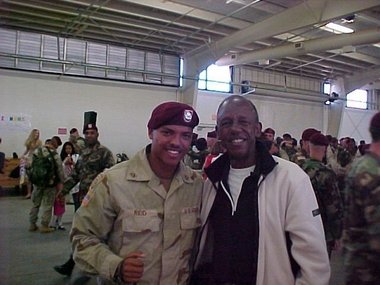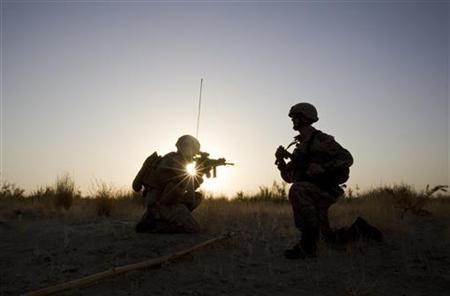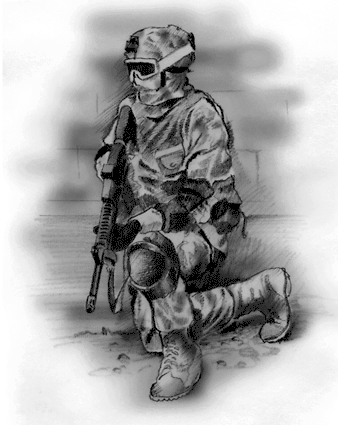Traumatic Brain Injury: Hidden Peril of U.S. Soldiers in Combat
Read more: http://www.time.com/time/world/article/0,8599,2109277,00.html#ixzz1ptv18DuH
Traumatic Brain Injury: Hidden Peril of U.S. Soldiers in Combat
Culture of Stress: Why are service members taking their lives at such an alarming rate?
Culture of Stress: Why are service members taking their lives at such an alarming rate?, 31 July 2011, Patriot-News Op-Ed
By: Mike Reid

Mike Reid, left, is shown with his father after returning from one of his deployments to Iraq. Reid grew up in the Harrisburg area and served in the Army for six years. He now lives in Georgia and works as a personal trainer
The most important thing to know about me is what I was doing during the years 2002 to 2008. In that time, I became “Army Strong” and spent nearly three of those years in Iraq.
It’s never made clear exactly what the Army slogan “Army Strong” means. I believe that I have the most accurate and truthful interpretation of what it stands for, and it has nothing to do with the commercials you see daily.
America’s service members feel the need to end their own lives at an alarming rate. It’s time we started talking about this, not to mention the increased amount of domestic violence and child abuse.
The armed forces suicide rate is double the national average. More American troops committed suicide in 2009 than died in combat in Afghanistan that same year: That is 381 suicides compared to 319 combat deaths. The statistic alone should make your stomach turn.
Those 381 suicides are spread among all four branches of the military — Army, Air Force, Marines and Navy — although 162 of them were Army soldiers. The military doesn’t count the suicides from Reservists or National Guard personnel, only active duty.
In 2010, the Army suicide number jumped up to 245, more than half of the 434 suicides militarywide. In 2011, just through the month of May, the number was already at 163 for the Army alone. The U.S. Department of Veteran Affairs says roughly 600 military and former military personnel take their own lives each year.
Now, try to stomach this one. For every suicide in the military, at least five more service members are hospitalized for attempting to kill themselves.
The question on almost everybody’s mind is, what is causing all of these American troops to do this?
FULL ARTICLE AT: http://blog.pennlive.com/editorials/print.html?entry=/2011/07/culture_of_stress_what_are_ser.html
Cost of Treating Veterans Will Rise Long Past Wars
Cost of Treating Veterans Will Rise Long Past Wars, 27 July 2010, NY Times
By: James Dao
WASHINGTON — Though the withdrawal of American military forces from Iraq and Afghanistan will save the nation billions of dollars a year, another cost of war is projected to continue rising for decades to come: caring for the veterans.
By one measure, the cost of health care and disability compensation for veterans from those conflicts and all previous American wars ranks among the largest for the federal government — less than the military, Social Security and health care programs including Medicare, but nearly the same as paying interest on the national debt, the Treasury Department says.
Ending the current wars will not lower those veterans costs; indeed, they will rise ever more steeply for decades to come as the population of veterans from Iraq and Afghanistan expands, ages and becomes more infirm. To date, more than 2.2 million troops have served in those wars.
Studies show that the peak years for government health care and disability compensation costs for veterans from past wars came 30 to 40 years after those wars ended. For Vietnam, that peak has not been reached.
In Washington, the partisan stalemate over cutting federal spending is now raising alarms among veterans groups and some lawmakers that the seemingly inexorable costs of veterans benefits will spur a backlash against those programs.
Even if cuts to veterans programs do not occur, the current mood of budgetary constraint seems likely to force the Department of Veterans Affairs to make do without the large spending increases it has received from Congress in the recent past.
That means efforts by veterans groups to expand existing health care programs, provide additional benefits to Vietnam veterans or institute new research into things liketraumatic brain injury or hearing loss will face difficult uphill battles, lawmakers and veterans advocates say.
“No one is thinking about the lifetime costs this country is responsible for,” said Senator Patty Murray, a Washington Democrat who is chairwoman of the Senate Veterans’ Affairs Committee. “I’m really worried.”
FULL ARTICLE AT: http://www.nytimes.com/2011/07/28/us/28veterans.html?_r=2
Mental Problems Of Soldiers’ Kids Tied To Wars
Mental Problems Of Soldiers’ Kids Tied To Wars, 4 July 2011, Reuters.com
By Alina Selyukh

U.S. Marines of Weapons Company, 1st Battalion, 3rd Marines are silhouetted against the sunset during a joint patrol with Afghan National Army (ANA) soldiers along Helmand river near the Camp Gorgak in Helmand province, southern Afghanistan, July 3, 2011. Credit: Reuters/Shamil Zhumatov
WASHINGTON — The longer U.S. soldiers were deployed in Iraq or Afghanistan, the more likely their children would be diagnosed with mental health problems, according to a study published Monday.
The study, published in the Archives of Pediatrics and Adolescent Medicine, analyzed medical records of 307,520 children of active-duty Army personnel, aged 5 to 17 years old. It found almost 17 percent of them exhibited mental health problems.
“Children of parents who spent more time deployed between 2003 and 2006 fared worse than children whose parents were deployed for a shorter duration,” the study’s researchers wrote.
The lead researcher was Alyssa Mansfield, who was at the University of North Carolina at Chapel Hill at the time the study was conducted.
The U.S. Army reported some 562,000 members in active duty and more than 570,000 children of such members in 2010. Just under two-thirds of all active-duty servicemen and women were married and 15 percent were raising children as single parents.
FULL ARTICLE AT: http://www.reuters.com/article/2011/07/04/us-military-idUSTRE7634XD20110704
All Medical Providers Should Have Training In Issues Related To Military Deployment
All Medical Providers Should Have Training In Issues Related To Military Deployment, 19 May 2011, Seattle Times
By Brian Baird
EVEN as a federal Court of Appeals ruled recently that Veterans Affairs care for veterans is inadequate, a possibly greater gap in care for service members has gone completely unrecognized.
In the past decade, approximately 2 million American military and civilian personnel have deployed to combat areas. Those individuals, plus their family members, face unique physical, emotional and economic challenges that can have lasting, potentially lethal, impacts.
If any other health-care condition affected so many and carried such serious potential risks, one would expect our academic and public-health institutions to pull out all the stops to ensure proper diagnosis and treatment. Nothing of the sort has happened.
In fact, the majority of our leading medical schools and other health-training programs provide no mandatory or even elective course work relating specifically to military service or deployment issues. As a colleague in Congress said when I asked about his own medical training, “I took course work on all sorts of diseases I’ll never see in my career, but I never had a single class or even a chapter on military culture or combat deployment.”
Some physicians and other health professionals gain exposure to these issues during residencies or other training at Department of Defense or VA facilities, but this is by no means universal or adequate. With so many people having been deployed and the heavy reliance on National Guard and Reserves, many of those who served will return to homes far from military bases or VA centers. So too, civilian government workers or contractors and their families have no access to such resources.
For many, the first line of health-care practitioners are likely to be family doctors, psychologists, school counselors, etc., most of whom have no training in these issues.
FULL ARTICLE AT: http://seattletimes.nwsource.com/html/opinion/2015089634_guest19baird.html
Study: Help Upfront Reduces Troops’ Mental Ills
Study: Help Upfront Reduces Troops’ Mental Ills, 18 Jan 2011, USA Today
By Gregg Zoroya
A battlefield study conducted by the Army on 20,000 soldiers during the troop surge in Iraq shows that more aggressive efforts to question and counsel GIs about their mental health reduce by nearly 80% the number who develop behavioral health illnesses during combat.
The results of the study, to be published today in the American Journal of Psychiatry, also show that 54% fewer soldiers contemplated suicide and that the number who needed to be sent home from Iraq with mental health problems dropped by nearly 70%.
“We’re excited about what this study shows,” says Maj. Gen. Patricia Horoho, Army deputy surgeon general. “It is the first direct evidence that a program (of more aggressive screening and treatment) is effective in preventing adverse behavioral health outcomes.”
The Army will begin using screening and treatment methods from the study within six months, Horoho says.
FULL ARTICLE AT: http://www.usatoday.com/printedition/news/20110118/iraqscreening18_st.art.htm
For Many Returning Veterans, Home Is Where The Trouble Is
For Many Returning Veterans, Home Is Where The Trouble Is, New York Times, 3 Jan 2011
By Lawrence Downes
UTICA, N.Y.–Across the country a tide is reversing. Soldiers deployed to two long wars are coming back, bringing some of the anguish home with them. Those who leave the service are trying to restart civilian lives, rejoining their families, going to college, trying to find jobs. It doesn’t always work out.
The challenges for returning veterans are particularly visible in upstate New York, around Fort Drum, home to the Army’s 10th Mountain Division, and some of the most frequently deployed combat units anywhere. Since 9/11, tens of thousands of Drum soldiers have seen two or three, sometimes even four tours of duty. Most who return disperse around the country, but a significant percentage stay nearby. Veterans are 13 percent of the population in the Fort Drum area, compared with 9 percent in the rest of the state.
In that band of fading cities and rural communities, the governmental safety net is stretched thin. With more veterans needing help, a growing network of nonprofit organizations is rising to meet the demand.
Business is booming in the veterans outreach center in downtown Utica. The center, once a YMCA, was bright and bustling on a recent gray, snow-dusted day. Staff members proudly showed the strands of a new safety net being woven into place: dormitory rooms upstairs that will soon be converted to transitional housing, a basement full of donated clothing, housewares and furniture. Classrooms. A boxing ring and exercise room. An Internet cafe.
On Dec. 10, the center celebrated the ribbon-cutting for a new program in which veterans meet other veterans for outings, conversation, friendship. The simple idea behind it: if you haven’t been there, you don’t know.








